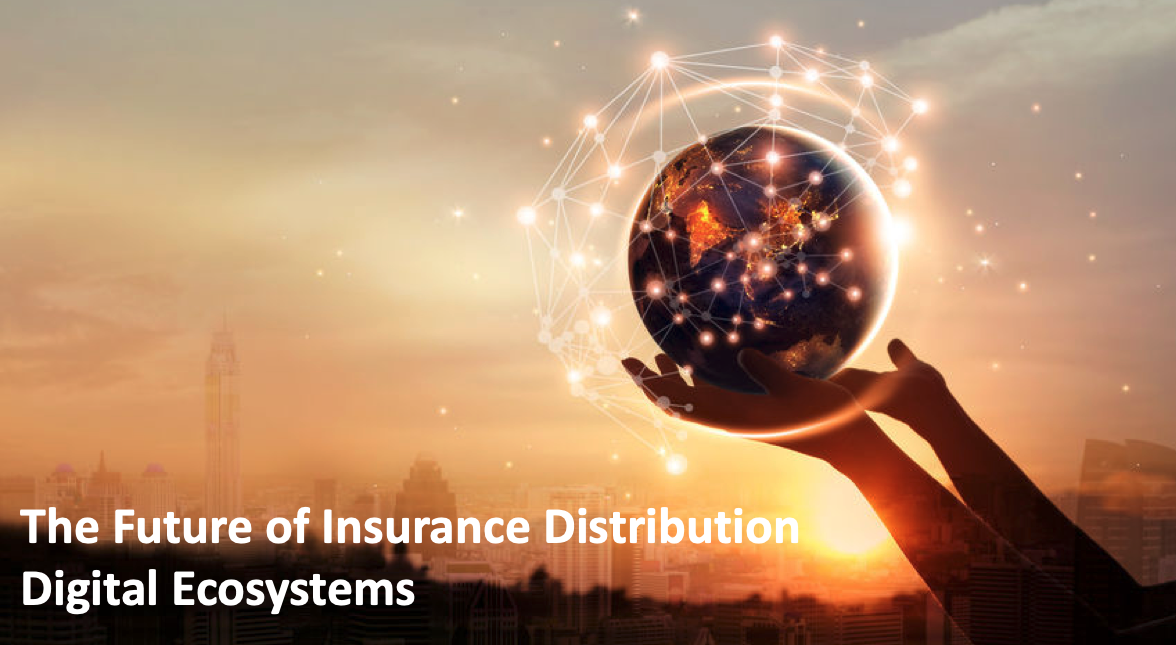
The Future of Insurance Distribution – Digital Ecosystems







Without a doubt, the 2017 and 2018 fire seasons in California are historically unprecedented. The last two fire seasons account for the top three most destructive wildfires in the state’s history. As California Governor Jerry Brown stated at a press conference in December 2017, “We’re facing a new reality in this state.”






Watching insurance CEOs grappling with InsurTechs, emerging technologies, and rapidly changing customer expectations a few years ago, was like watching a struggling new guitar student. That’s Changing! They started struggling to make fingers form uncomfortable new positions. Failing to coordinate right-hand and left-hand movements. Trying desperately to make their beginner’s voice and hands resemble something close to the song they were trying to play. Many got frustrated and put the guitar or digital innovation back in the case. More than a few persevered. They’ve moved past the first barre chords. Today they’re starting to find their digital groove, and what they’re going to do next will rock the industry.
The CEOs that hung in there are building and supporting teams that have the skills to understand and deliver digital generation solutions. They are developing a vision and strategy set in the digital future instead of the paper past. They are actively seeking and building successful partnerships with emerging technology firms and InsurTech startups. The basic chords needed to stand on the digital stage.
There are however CEOs for whom just getting up on stage and working through a cover set will never be enough. They are the ones who will take their companies and the industry to the next level. They’re building cultures and organizational structures designed to fill arenas with digitally engaged and supported customers by delivering breakthrough value to them. Value created by looking at insurance through entirely new lenses and developing business models and products designed to define the digital age of insurance. Those are the CEOs that will be recognized in the next several years as the digital rock stars of insurance’s digitally-connected future.
So what’s their setlist look like? What are the building blocks they will use to move their companies and the industry from a few basic digital chords to industry bending progressions and arrangements– Compositions that leave the rest of the industry playing in local bars while they stand on the world stage.
Optimizing Teams and Digital Lessons Learned
CEO’s who emerge as the digital stars of the insurance world will continually take stock of not only what has and hasn’t worked within their organizations, they will also look beyond insurance to understand those lessons from outside of their industry. They recognize that learning from others is as critical to innovation as learning from your own efforts.
Lessons Include
Future Proofing Investment in Digital Infrastructure
The insurance industry of the future is surrounded by a world of constant innovation and change. In order to compete and survive, it’s necessary to have a digital infrastructure that is able to support continuous innovation and change.That doesn’t mean just moving to a new core system environment. It means taking time to understand emerging technology, business, and architectural model trends and the requirements they will place on the business and your infrastructure and core systems. It’s important to select systems and architectures that are designed to continually evolve, that will support frictionless interoperability with external systems and data models. Future proofing also means evaluating potential acquisitions, not just for the lines of business or customer base they represent, but also for whether their core systems and architecture will be an anchor or a catalyst in helping you succeed in the digital future.
Reimagining Insurance from the Outside in
The best leaders are creating a vision from the outside in. They are starting with the customer and trying to understand their goals, challenges, and circumstances. Starting there gives them a better line of sight into where they can create incremental value for the customer. In a digital world that also means understanding how the user will be using technology to support their goals and lifestyle. With that as a base, they can then look at how emerging technology can be added to the mix to better support and enable the customer.
Harnessing the Power of Digital Ecosystems
The next step is to understand the digital ecosystems surrounding the insured and how the solutions, devices, and data within those are supporting the customer. Developing a map of those ecosystems and the value they create is the first step. Next, they can assess what role insurance can play in those ecosystems and how combined with the other solutions and data can be developed into powerful new insurance business models and products.
Born to Partner
In a digital world where interoperable ecosystems and solutions can be combined instantly to form new highly personalized solutions to meet real-time contextual needs, partnering is imperative. Excelling at partnering in a world of digital ecosystems requires the ability to partner instantly from a business and technology standpoint. Examples of this are the “there’s an app for that” world of Apple, and the Salesforce AppEchange. As an ecosystem and platform owner, they make it very easy for partners to develop and deploy solutions into their platform and make it even easier for customers to access those. There are no long drawn out contract negotiations or application integration cycles. It’s literally plug and play from a business and technical standpoint. This is where the next generation of ecosystem-based insurance solutions are headed. Without that kind of partnering capability, companies won’t survive.
Continually Reinvent
With the average life expectancy of large companies decreasing and the pace of innovation increasing, companies that survive will be the ones that never stop reinventing themselves. So like Jazz or country music today which are continually evolving and constantly and creatively being reinterpreted, the insurance industry must do the same.
Think about Apple. It went from selling personal computers, to completely redefining the music distribution business, to redefining the mobile phone industry. Think about Netflix that went from distributing CDs in vending machines to the online powerhouse it is today. Or, Amazon moving from an online bookseller to the world’s largest retailer.
These companies never stop seeing the world differently and reinventing how industries work. Insurance companies that expect to survive in a digital economy must do the same. The CEOs who guide their companies using the above formula will emerge as leaders that will play on the world’s stage. The rest will fall behind and can expect nothing more than to be playing in the local bar.
Come listen to topics like this and others from innovative industry leaders at InsurTech FUSION Summit on June 18 -19 in San Francisco.
Stay on top of all the latest InsurTech news and trends on the SVIA blog!

The future of insurance is already upon us as traditional insurance companies incorporate more tech-savvy features into their options, and giant tech companies offer insurance services. Insurers, brokers, InsurTech companies, and companies such as Amazon are changing the foundation of insurance into a digital ecosystem providing connected insurance and value-added services for customers.
Insurance technology has been developing at a rapid pace in the last decade. Software robots can now mimic human actions and produce repetitive tasks across multiple business applications; FinTechs and InsurTech companies have made major inroads by creating powerful applications that handle problems and deliver high-quality digital experiences. Mining social media data is improving risk assessment for insurers, increasing the capabilities of fraud detection and enabling new customer experiences.
The future for insurance is a connected insurance atmosphere, a digital playground for everything from tech giants to hip startups. As platform providers change and become more dominant within these ecosystems, they’re beginning to change what is required to compete as an insurance provider.
Connected Data Boosts Innovation
Insurance companies, such as Progressive, began capturing real-time data from customers. Data-capturing devices and connected data coupled with predictive analytics and machine learning are delivering not only improved customer experience and overall satisfaction but better services and new business models that drive growth and profits.
Connected insurance has given way to personalized premiums for auto insurance companies and their customers. A U.K.-based InsurTech company, Bought By Many, has been aggregating users with specific and personalized insurance needs, allowing insurers to offer them services at scale. This kind of service is reflective of what’s going on in the commercial insurance industry. Everything from data patterns to cloud-based applications are forming what it means to offer insurance to customers, helping to personalize an experience and create a more tailor-fit model of connected insurance.
Insurers have a unique level of access to rich datasets. Most insurance companies can be reluctant when it comes to revealing why they ask certain questions because it can reveal too much about how they price out their products based on data. But InsurTech companies have learned that customers trust them more when they show the benefits of providing such data for a more personalized experience.
Companies who caught on to this customer-centric ecosystem have changed their business models to give customers more control over their premiums. This enables the customer to acquire insurance when and where they need insurance and also enables insurers to reward customers based on their risk profile. This pay-as-you-go, pay-as-you-drive structure has been changing the auto insurance game with companies like Root and MetroMile popping up as disruptors.
This model is also becoming popular among health insurance providers, which rewards customers for living healthier lifestyles with lower premiums. They can do this by tracking behavior using wearable technologies, like with Oscar, a Google-backed InsurTech startup that rewards users for every step they take when they are being tracked using a wearable band. Other insurers are collecting data on heart rate and blood sugar levels for diabetics to adjust their risk profile while also providing coverage. This change in the ecosystem has made insurance companies lifestyle companies or essentially tech companies that offer insurance as a bonus.
Offering Perks
Gamification has made its way into every industry as mobile app usage has seen a sharp rise. User experience and user design show up in insurance companies’ assessments of customers by providing a progress bar to show how much longer the customer has until they are finished. It’s a small but simple way to include gamification into a process that’s usually seen as a nuisance.
Gamification can help to display information for customers more clearly so they choose the right product and service and get the lowest premium for it. This could include having them answer a few basic questions that apply to them the most. Plus, with pay-as-you-go, companies are offering perks and discounts when customers track their lifestyle habits and daily goals, hitting milestones and competing in a friendly way with others in their health community.
AI and UX Design
UX design has paved the way for a more streamlined approach to holding the attention of the customer and prospects. Companies like New York Life offer up an abundant knowledge base for customers looking to get information on the purpose of life insurance and what types of coverage they can purchase. The company has made it easier for first-time insurance buyers to sift through stacks of policies with dense information and get to the information they need on a simpler scale.
When it comes to artificial intelligence (AI), companies like Lemonade, offering renters and home insurance policies for homes, apartments, co-ops, and condos, are using AI bots who can help find the best coverage through web chat features. Plus, mobile apps are allowing customers to get insured in under 90 seconds and paid in three minutes. This is making insurance sexy as opposed to dealing with the long, drawn-out process of legalese that would turn customers away in the past.
InsurTech technology has created a pathway for mobile diagnosis and prescribing, like with Roman, a men’s health startup that allows men to find the service they need for things like erectile dysfunction and hair loss. While not an insurance company, Roman is mirroring a new wave of Teladoc services that most major companies are implementing now with 24/7 access to health care.
The future of insurance is ripe with opportunity for insurers who move beyond a product focus and look deeply into the goals and outcomes that are most important to their customers. Those who learn how to harness data, services, and devices in the digital ecosystems surrounding the insured by leveraging emerging technology and utilizing awesome UX to help customers understand, prevent, and manage risk will emerge as the future insurance leaders.